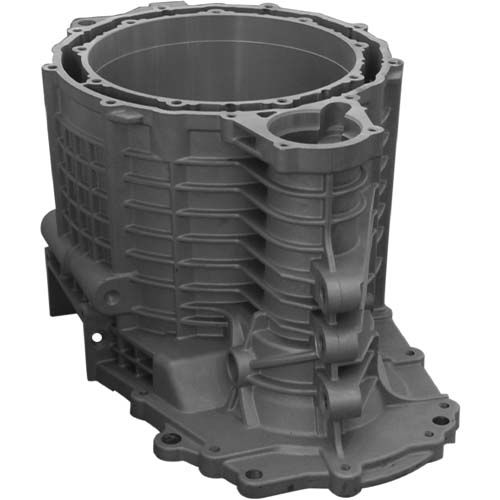Introduction to thermography
In the HPDC industry, temperature plays a key role in several phases of the manufacturing process:
- Temperature monitoring in the start-up phase, when the die needs a gradual warm-up until reaching the correct operating conditions.
- In production, when die temperature is measured for optimal control of the spraying of release agent. Reaching the optimal temperature operator has the option to improve the quality of the product.
- Temperature visualization and management of the die; in most cases, allow a correct thermal balance that determines the final quality of castings (reduction of scrap).
In order to face the modern challenges of the HPDC industry and the growing requirements of the automotive OEMs, INPROTEC IRT has developed an innovative system for the control and monitoring of the surface temperature of a die. The result is the Die Thermal Control (DTC) unit.
The DTC unit consists of a movable trolley and two IR cameras integrated into air-cooled aluminium housings. The cameras acquire thermal images in real time, enabling immediate process feedback and control. ROIs (Region Of Interest) and POI (Point Of Interest) can be set for monitoring specific details of the casting tool, temperature trends or for compare previous production batches to current ones.
All data are stored and processed by a panel PC. Post analysis of thermal images can be easily carried-out by downloading the data from the DTC via USB.
The DTC unit is provided with an electric cabinet, a pneumatic system for shield the infrared window, and with 10m long conduit, (electric cables and air tube) with industrial connectors between the housing and the industrial trolley. It is available also a cabinet version to install directly on the DCM.
The DTC system fully meets the features of the Factory 4.0 as it is possible to interact with other peripherals such as:
- Robot
- Lubricate head
- Thermoregulation unit
- HPDC machine
The DTC Die Thermal Control System
1
2
3

4
5
6

DTC - 4H

Modular DTC designed to connect up to 4 radiometric infrared cameras, to capture and measure the surface temperature of mould figures with very deep cavities.
Ideal for mould control of components such as engine blocks and gearboxes (using only 2 infrared cameras optically can not cover the entire shape of the mold and also the cavities).
 English
English  Español
Español  Română
Română  Italiano
Italiano  Deutsch
Deutsch  Français
Français  Chinese
Chinese 















